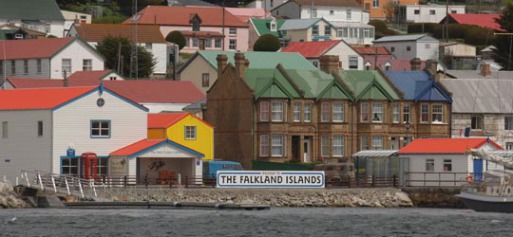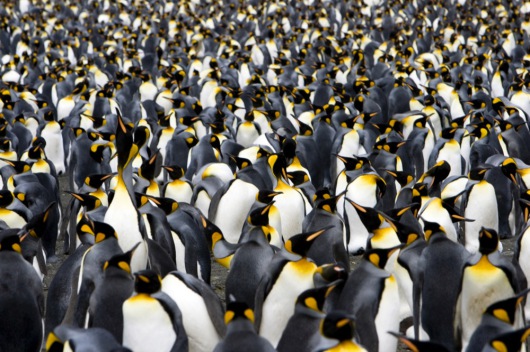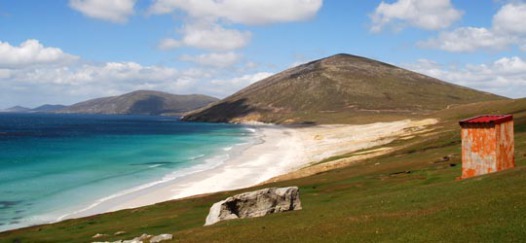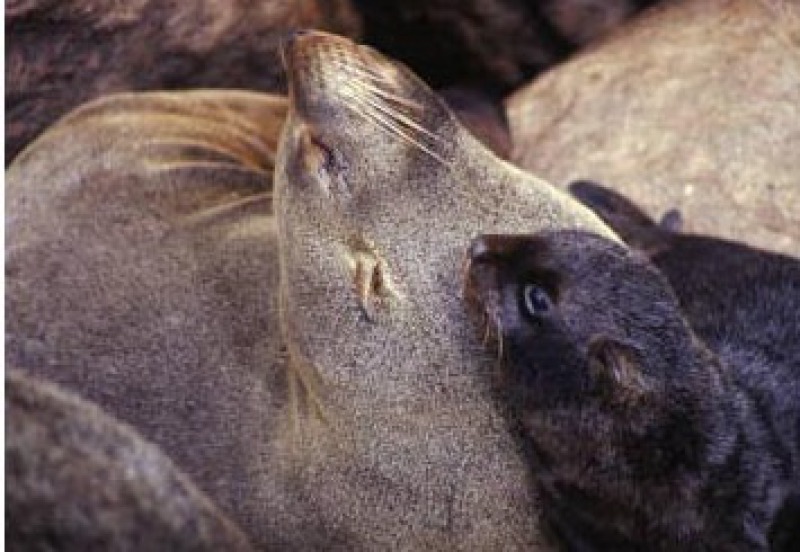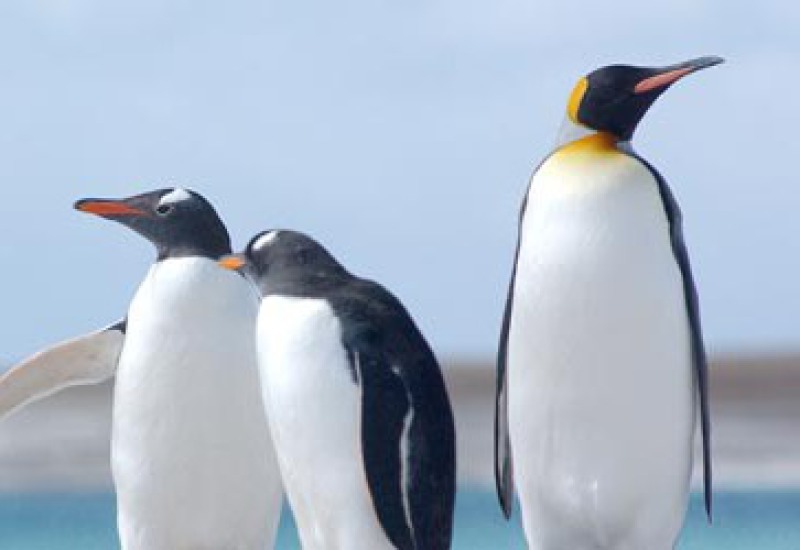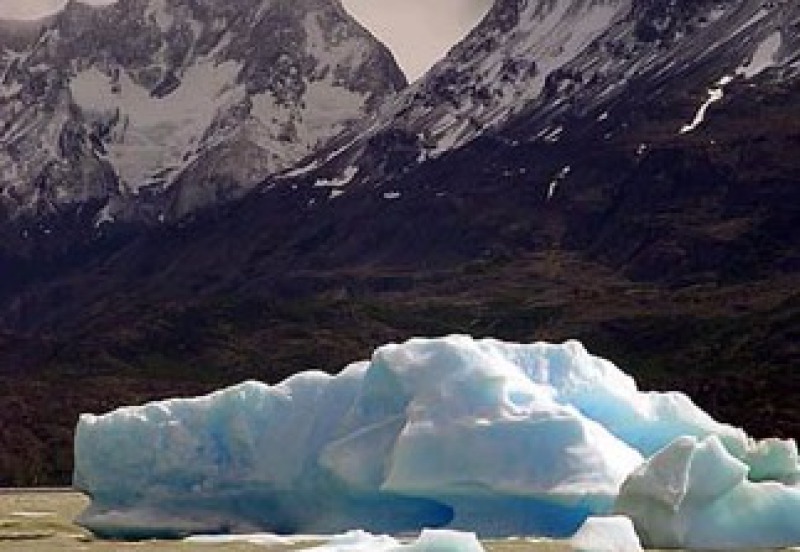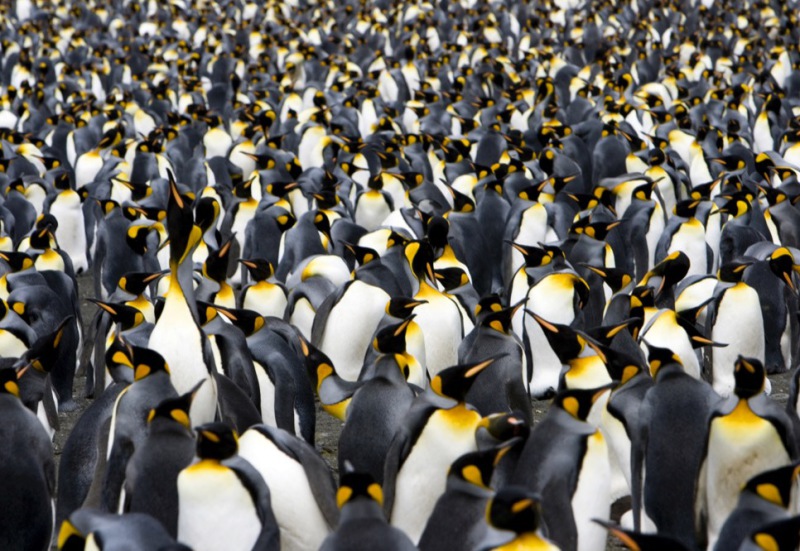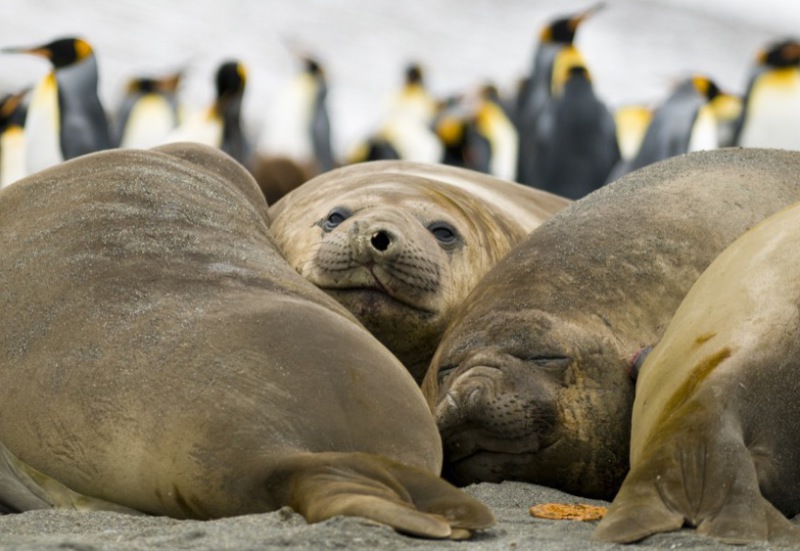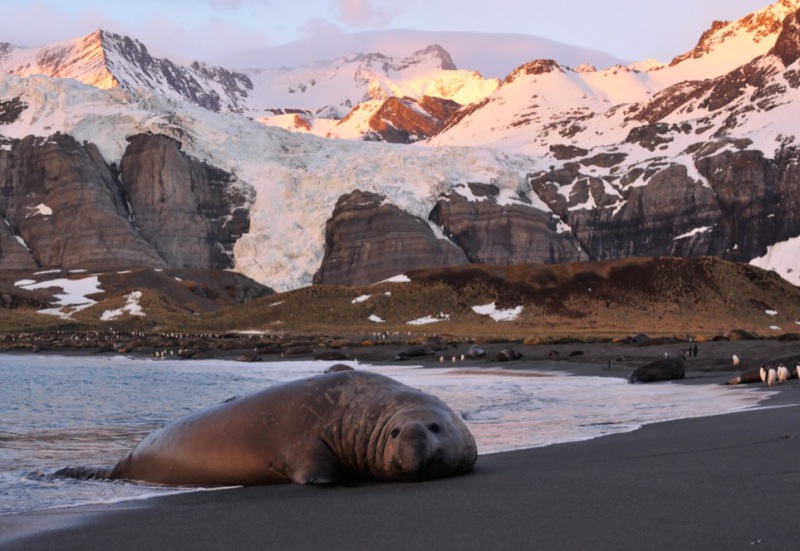The Falkland Islands are a remote group of more than 740 islands situated 400 miles off the south-eastern tip of South America. This little-known archipelago remains one of the great natural
wonders of the modern world - dominated by miles of pristine coastline and spectacular wildlife. With the wealth of wildlife including five species of penguin and over 60% of the world’s population
of black-browed albatross, as well sea lions and other marine mammals, visitors are sure to enjoy an unforgettable experience.
Accommodation outside Stanley is comfortable in small lodges or self contained cottages. Where only self contained cottages are available, we can arrange meals to be delivered for you to cook, as
there are no shops nearby. Summer in the Falklands is a wonderful time of year with average temperatures of 15 ºC and long daylight hours. The winter is milder than the UK with temperatures of 5
ºC.
East Falkland
East Falkland is the largest of the Islands and is home to more than 85% of the country’s population. Part of the appeal of the Falklands is the change in the natural environment and wildlife
between locations.
Stanley, the capital of the Falklands, is a charming town with a population of only 2,000. Stanley boasts many reminders of its English heritage, such as red phone boxes and
distinctly English pubs. You can explore the town on foot and view the brightly coloured houses, visit the world’s most southerly cathedral and the museums of maritime and Falkland Island
history.
Volunteer Point, three hours from Stanley, is the largest, most accessible king penguin colony in the world outside of South Georgia. Gentoo and Magellanic penguins, waterfowl
and endemic subspecies such as the dark-faced tyrant, Falkland pipit and thrush are also found here. Volunteer Point is usually closed from April to November due to weather conditions.
Based at the extreme south of East Falklands, Bull Point is an isolated location where you will find gentoo and Magellanic penguins, sea lions, and many native plants and
flowers. The site is 4.5 hours from Stanley. Maritime enthusiasts will also enjoy examining the hulk of the Craigielea, a large 3-masted barque that was wrecked on the western point in 1879.
North Arm is set at the southern end of East Falklands and the head of the Bay of Harbours, three hours from Stanley. The region is renowned for its landscapes, varied wildlife,
and excellent walking and photography.
Darwin and Goose Green are situated on a narrow bridge of land linking upper and lower East Falklands, approximately two hours drive from Stanley. For those
interested in military history, these areas contain remnants of the 1982 conflict.
Gypsy Cove is a photogenic beach enclosed by a colony of burrowing Magellanic penguins. Its proximity to Stanley (four miles walk) makes it a popular spot for locals and
visitors seeking a penguin encounter.
Port San Carlos settlement is an excellent base for exploring the coastline and the rest of upper East Falklands. Guests can choose to hike to nearby rockhopper and gentoo
colonies at Fanning Head and Rookery Sands beach. A return hike to Fanning Head will involve approximately six hours of moderate walking.
West Falkland
“West is best” is the common catchphrase used by those lucky enough to live on the Falklands’ second largest island. Accessing the West has never been easier, with flight and ferry access
available from neighbouring East Falkland, providing direct access to some of the most spectacular scenery in the Islands.
Port Howard is a sheep farming settlement from which the 200,000-acre Port Howard Farm is operated. Visitors can learn about the various aspects of sheep farming and take
advantage of hiking and golfing opportunities. Port Howard is also one of the best places to stay for sea trout fishing on the Warrah and Chartres rivers.
Port Stephens’ rugged headland provides a breeding ground for many rockhopper and gentoo penguins. Just an hour’s scenic coastal walk from the settlement lie Wood Cove and
Stephens Peak, both excellent for wildlife watching.
Outer Islands
Bleaker Island is a 30-minute flight south west of Stanley and is open year round. Here you will find large breeding colonies of gentoo and Magellanic penguins as well as
Imperial shags.
Some 24 miles long, Pebble Island’s settlement sits on a narrow neck of land close to a sandy beach. The island supports a number of penguin colonies and concentrations of sea
lions.
Saunders Island is one of the jewels of the Falklands. It is a 31,000-acre island teeming with bird life, particularly the black-browed albatross and all five breeding species
of penguin. Commerson’s and Peale’s dolphins are often seen off the coast. Lying to the northwest of the Falklands archipelago, Carcass Island is one of the most picturesque outer-lying islands. The
sandy beaches, rolling hills and low cliffs are superb platforms from which to view the penguin colonies and multitude of sea and shore birds.
Sea Lion Island is five miles long and just over a mile wide at its widest point. The 47 different species of breeding birds to be viewed on the island include four species of
penguins and five different birds of prey. Pods of orca circle the island in pursuit of the elephant seals and sea lions that breed there. Leopard seals and larger whales are also seen from time to
time.
West Point Island this small island lying off the northwest corner of West Falkland is a full day excursion by boat from nearby Carcass Island. Devil’s Nose – a rocky
promontory – is home to over 2,000 pairs of black-browed albatross along with about 500 pairs of rockhopper penguins. As well as the rich wildlife, the picturesque settlement and small harbour, often
teaming with dolphins, makes this island well worth a visit.

